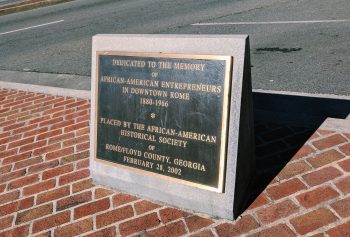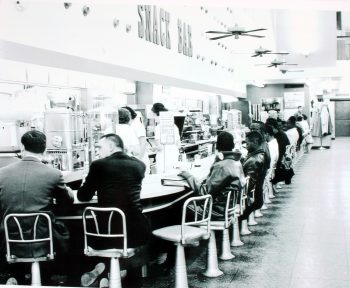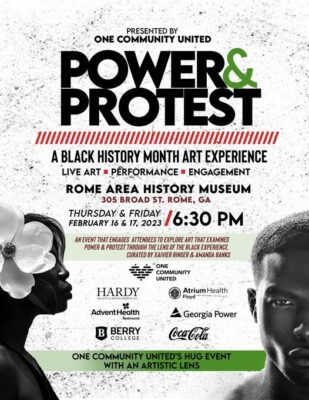
Monument dedicated to African-American business owners, which can be found on the 500 block of Broad Street.
Downtown Rome is best known for unique shopping, eating, and nightlife experiences in Northwest Georgia, but Broad Street and the surrounding area has also been a monumental site of protest, hope, and resilience. As you visit Rome or explore Rome as a native, we invite you to broaden your knowledge and learn about our local black history that continues to shape our community.
The Rome Area History Museum offers many insights into the events leading up to desegregation in the city. An interesting facet of the display is the area highlighting medicine in the black community. Because African-American physicians were not allowed to have their own medicine practice before 1940, Dr. Robert H. Brooks founded Brookhaven in 1912, a medicinal practice for the black community. This institution was located at Broad and Ross Streets, and staff members included Dr. Eugene Weaver, Dr. E.L. Toomer, Dr. C.I. Cain, Dr. Jerome Bryant, and more. This hospital also served as a clinic where children could receive necessary examinations and dental care. The institute closed in 1944, but in 1934 Dr. Bryant was elected President of the Negro Medical, Dental and Pharmaceutical Association of Georgia. Later, Dr. Eugene Weaver became the first black physician to treat patients at the old Floyd Hospital (now AtriumHealth Floyd).
Some of you may even remember when Rome was considered part of a circuit that celebrated music in the African-American community. On weekends in the 1950’s, it was a sure bet that the streets of East Rome would be lined with cars with people ready to kick up their heels at the Idle Hour Club, the Mix Masters Club, or the Carver Country Club. Individuals came from as far away as Chattanooga and Atlanta for the incredible fish, pig ears, chicken, tomatoes, and music this circuit had to offer. In fact, stars such as Etta James, Little Richard, and James Brown were known to perform at some of the venues!

Students participating in a “sit-in” at Murphy’s.
One of the most striking exhibits at the history center is the Murphy exhibit which shares the history of the peaceful protest put on by 62 Main High School students in March of 1963 at the C.G. Murphy Lunch Counter on Broad Street. The young adults took part in a peaceful “sit-in,” which was inspired by the peaceful nature of Martin Luther King Jr.’s style of protest. Because their actions were unlawful due to segregation, they were placed under arrest and jailed. A memorial quote from the occasion states: “we are fighting for our rights, we shall not be moved, we want our human rights.”
The southwestern wall adjacent to the Rome Area History features a plaque that acknowledges Rome’s first African American city commissioner, Mr. Napoleon Fielder. The city designated this location as an official landmark on October 20, 2022.

On February 16 & 17, 2023, the Rome Area History Center invites everyone to attend a special exhibit called Power & Protest featuring live art and performance. The event engages attendees to explore art that examines power and protest through the lens of the black experience and is curated by Xaivier Ringer and Amanda Banks.

Leave a comment